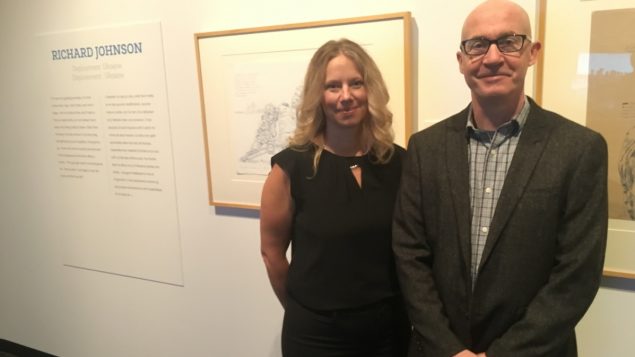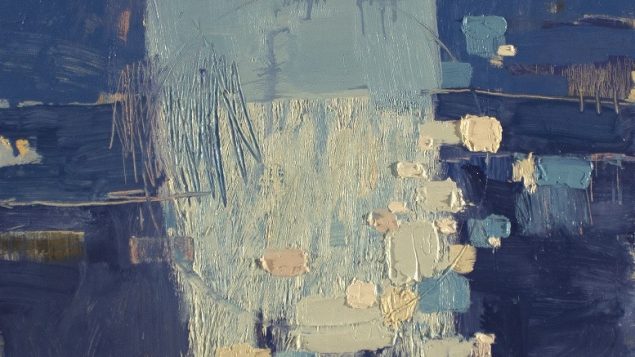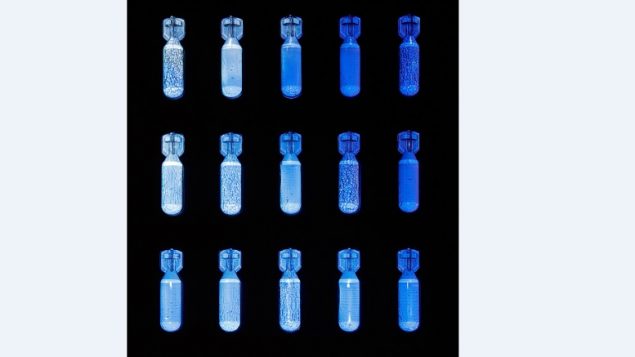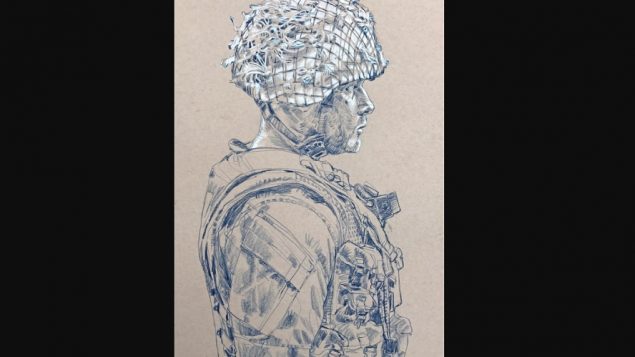Canada has over a century of history of sending artists to interpret images of war, conflict, and peace resolution that this country has been involved in.
That certainly continued with recent conflicts in Afghanistan were Canada was a participant, and recently in Ukraine where Canada provides additional training to Ukraine troops.
The Canadian War Museum in the national capital, Ottawa, has many of these historical artworks on display, and has just created an exhibition of the recent war artist programme from Ukraine.
I spoke with one of the artists, Richard Johnson, and with the museum curator Joanne Stober (PhD).
Listen
Curator Joanne Stober, artist Richard Johnson
The history of Canadian artists depicting the military in war in an official way, goes back over 100 years to the First World War.
Since then and in a variety of ways both official and semi-official Canada has sent artists to follow, artistically reproduce, and interpret Canadians in military activities both at home and abroad
In 2001, the Department of National Defence created the Canadian Forces Artists Programme (CFAP).
For this progamme, an advisory committee selects a group of professional civilian artists from various
Canadian regions to observe the activities of the Canadian Armed Forces, Every two years those artists create work through the variety of their creations to unique interpretation and understanding of Canada’s military history.

Ship’s Wake- Ivan Murphy, oil on wood
The artists maintain complete artistic independence as they capture the daily operations, personnel and spirit of the Canadian Armed Forces, as well as the families and communities affected by Canadian military operations.
The work currently on display at the Canadian War Museum has been selected from the 2014–2015 cohort of the CFAP (Group 7).
Just like members of the CF itself, the artists represent a number of regions of the country. Their work also represents a wide range of media including photography, video, sketches, oils, glass sculpture, and mixed media works on paper and textiles.

HARD RAIN Cast glass, looped projection, metal brackets Mark Thompson
From the CWM website, the exhibition includes:
- Nancy Cole: Born in Summerside, Prince Edward Island, Cole grew up on military bases. Her work addresses social themes through an interdisciplinary process that bridges visual arts, textile arts installation, performance and new media. Her piece in the exhibition, Night and Day, consists of two conceptual, minimalist, hand-quilted textiles that reflect the dark and light aspects of the CF-18 Hornet’s role: in Operation IMPACT, and as entertainment in air shows.
- Richard Johnson: This Scottish-born visual artist and writer was embedded with American and Canadian forces in Afghanistan as a journalist for the Detroit Free Press and the National Post, before travelling to Ukraine as an artist with the CFAP in 2015. His pencil drawings show Canadian and Ukrainian soldiers working together in Operation UNIFIER, the Canadian mission to support Ukrainian armed forces through military training.
- Guy Lavigueur: An artist from Mont-Joli, Quebec, Lavigueur uses the abstraction of aerial photography to straddle the fine line between the documentary and the imaginary, and to encourage people to think about the right balance between nature and human impact. He joined Operation NANOOK in 2015, and the art he created juxtaposes the fragility of the Arctic landscape with the mammoth “protective” military efforts made in the North from the Cold War to the present day.
- Ivan Murphy: This native of Québec City describes his abstract paintings as cryptic notes, based on memory, in which larger perspectives supersede individual works, and repetition reveals what is constant and true. He used his CFAP residency, working aboard HMCS Charlottetown, to explore the seascape as a metaphor — understood by the military in quantitative, strategic and tactical terms, and “seen” at a remove through technology such as radar screens.
- Kathryn Mussallem: After three years of photographing the U.S. Navy, this Vancouver-based artist joined the CFAP for the opportunity to focus on her own country’s military. She spent a week aboard HMCS Calgary as it sailed from San Diego to Pearl Harbor for RIMPAC (Rim of the Pacific), the world’s largest naval exercise. Mussallem’s dynamic photographic prints capture the hard work, personalities, diversity and camaraderie of the Canadian men and women who serve
- Erin Riley: After beginning her photography career working for newspapers and magazines in her hometown of Toronto, Riley shifted to an artistic practice. In her art, she explores universal themes and characteristics by focusing on individuals and details in their surroundings. When visiting CFB St-Jean, she used a traditional documentary photo approach, spending time with newly recruited men and women of the Forces to understand why they had chosen to serve.
- Mark Thompson: This native of Ottawa creates glass-based paintings and sculpture. The CFAP took Thompson to Kuwait, where he found inspiration in the night missions; the strangeness of massive high-tech air bases in the desert; and the maturity, ability and hard work of the very young Canadians serving there. He describes the experience, which started with a night flight over flaming oil wells and ended at the Kuwaiti National Art Gallery, as life-altering.
- Eric Walker: This Ottawa-based visual and media artist is a Métis Acadian from Halifax whose grandfather and father both served in the military. Walker’s works often depict urban landscapes, aerial perspectives and stylized architecture. He stayed at CFB Stadacona and sailed on HMCS Halifax as part of the CFAP. His experimental video, “The View From Point Pleasant”, conveys the spiritual connection between the Royal Canadian Navy and Halifax







For reasons beyond our control, and for an undetermined period of time, our comment section is now closed. However, our social networks remain open to your contributions.